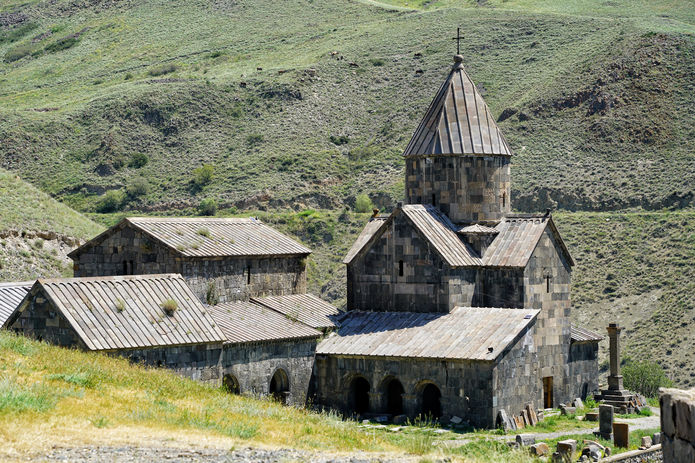
Vorotnavank Monastery
Armenia
Cultural Treasure
The Vorotnavank Monastery, sitting precariously on the edge of the Vorotan Canyon, was one of the most important institutions in medieval Armenia. In the year 1000 A.D. the wife of the Syunik king built the structure seen today. Legend says that the monastery was constructed over a rectangular shrine built by Gregory the Illuminator in the third century. Vorotnavank became one of the leading educational and religious centers in Armenia, and also a place of pilgrimage, as it was said a snakebite could be healed here. The founder of the Tatev Monastery further south in Syunik, perhaps the most famous building in Armenia today, studied and lived in Vorotnavank as well.
Reaching the monastery is one of the most rewarding in Armenia as few make it out, but the reward is great. East from Sisian, the rough road winds through a lovely canyon until reaching the complex. Waking further into the complex reveals a large fortification built into the cliff of the Vorotan Canyon. Inside the monastery is a peaceful reminder of the past. In 1931 part of the monastery was destroyed by an earthquake, but restoration efforts have done a fine job in bringing it back to its former splendor.
EXPLORE THE LOCATION
Use the interactive map to also discover nearby treasures.
QUICK FACTS

Location:
In Several kilometers to the east of Sisian, a major town in the southern Syunik province of Armenia. The road has some rough patches, but is doable in any vehicle.
Period:
The monastery seen today was constructed in the year 1000 A.D. It was believed to be built over the remains of a much earlier shrine.
Purpose:
One of the top religious and educational centers in Armenis, particularly between the 11 and 13th centuries.
Now:
The monastery is free to visit and explore. It is one of the most rewarding monasteries to visit in Armenis as it sits on a stunning location, with seldom to none people visiting.
SNAPSHOTS OF THE TREASURE




